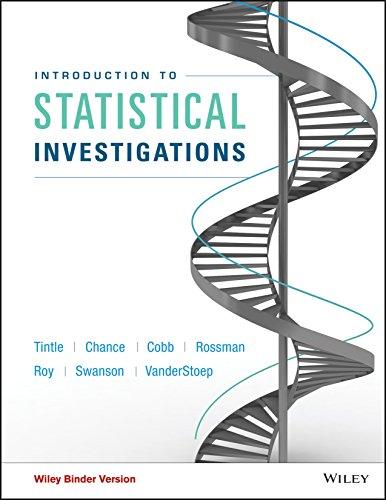In a randomized, double-blind study reported in the Journal of American Medical Association, researchers Waber et al.
Question:
In a randomized, double-blind study reported in the Journal of American Medical Association, researchers Waber et al. (2008) administered a pill to each of 82 healthy paid volunteers from Boston, Massachusetts, but told half of them that the drug had a regular price of $2.50 per pill, whereas the remaining participants were told that the drug had a discounted price of $0.10 per pill, mentioning no reason for the discount. In the recruitment advertisement, the pill was described as an FDA-approved opioid analgesic, but in reality both groups were administered placebo pills. To simulate pain, the participants were administered electric shocks to the wrist, and the researchers recorded the proportion of subjects who reported a reduction in pain aft er taking the pill.
a. Identify the explanatory variable and response variable. For each variable, identify the type (categorical or quantitative).
b. Explain what “randomized” means in this study.
c. Explain what “double blind” means in this study.
d. The researchers report “pain reduction was greater for the regular-price pill (p-value < 0.001).” Explain what the researchers mean by this. Be sure to comment, with correct justification, on:
• Whether the results are statistically significant.
• Whether a cause-and-effect conclusion can be drawn.
• To whom the results of the study can be generalized.
Step by Step Answer:

Introduction To Statistical Investigations
ISBN: 9781118172148
1st Edition
Authors: Beth L.Chance, George W.Cobb, Allan J.Rossman Nathan Tintle, Todd Swanson Soma Roy





